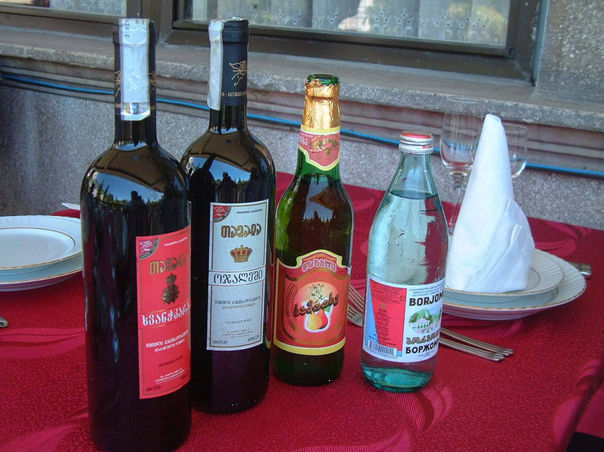Impressions of Georgia
Sakartvelo, here we come. Sakartvelo? That is how Georgians call their own country in the Caucasus, in an ancient tongue, which mysteriously is in no way connected to any group of Eurasian languages. Even the elegantly rounded Georgian alphabet stands completely on itself. Until the 1991 break-up of the USSR, Georgia was one of the Soviet Republics. Eleven years later, at the time of our visit, this was still very visible, not as much because Stalin was born in the Georgian city of Gori, but rather because of the rusty remainders of abandoned factories along the Poti-Tbilisi axis, the Russian made cars on the worn roads and so many other details. Georgia has undoubtedly changed a lot since then. Not only the Bagrati church, here in my photo collection still a ruin, has been reconstructed. I only hope that the wine from the Telavi region is still as divine as it was then and that the magic spirituality of the innumerable Georgian Orthodox monasteries and the charm of the country's capital Tbilisi have remained as sparkling as in 2002.
And by the way, as a fringe benefit to this series, reading out aloud some of the comments is an interesting speech exercise: 'how do you manage to cross the Mtkvari River at Uplitsikhe, coming from the Svetitskhoveli cathedral in Mtskheta’?
Before visiting the place of your choice:
Also in Mtskheta, the conic and isolated Jvari hill is crowned by a monastery church, according to legend, founded in the early 4th century by Saint Nino herself. Nino was the driving force behind the early and rapid Christianisation of Georgia and the Nation’s identity which is still very much intertwined with Georgian Orthodoxy. The Jvari Monastery is renowned for its bas-relief decorations on the external apsis walls and above the entrance gate.

© 2020.Created by Marc Van den Reeck with Wix.com























